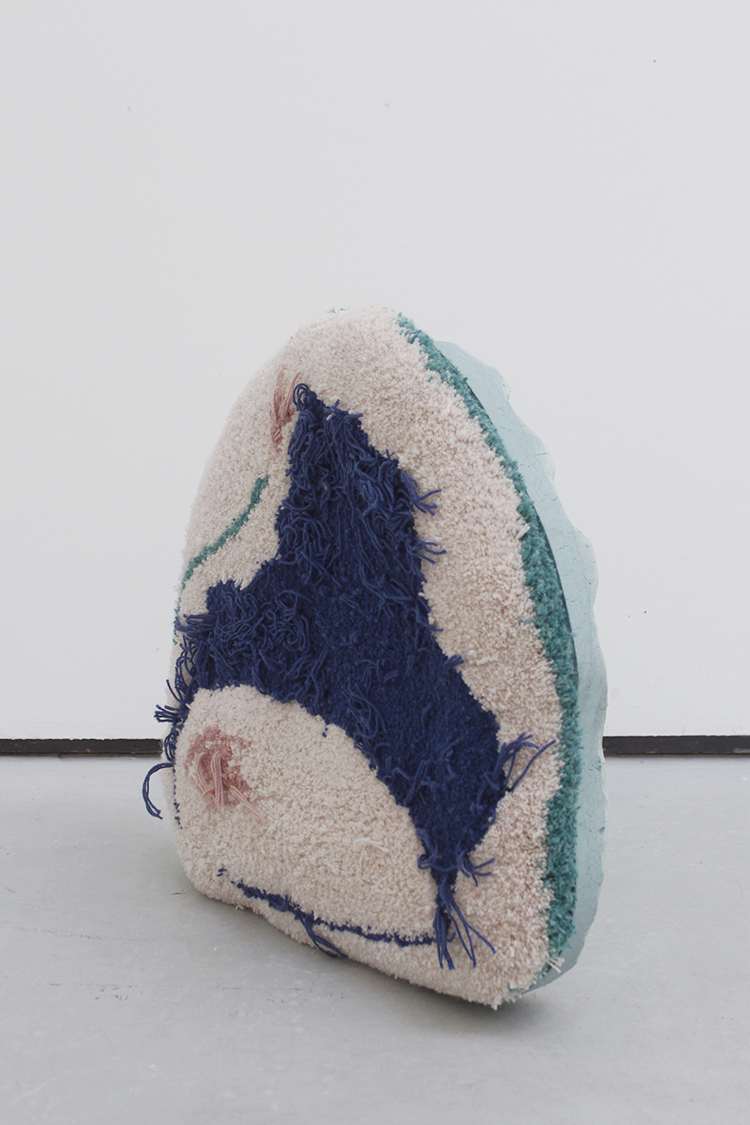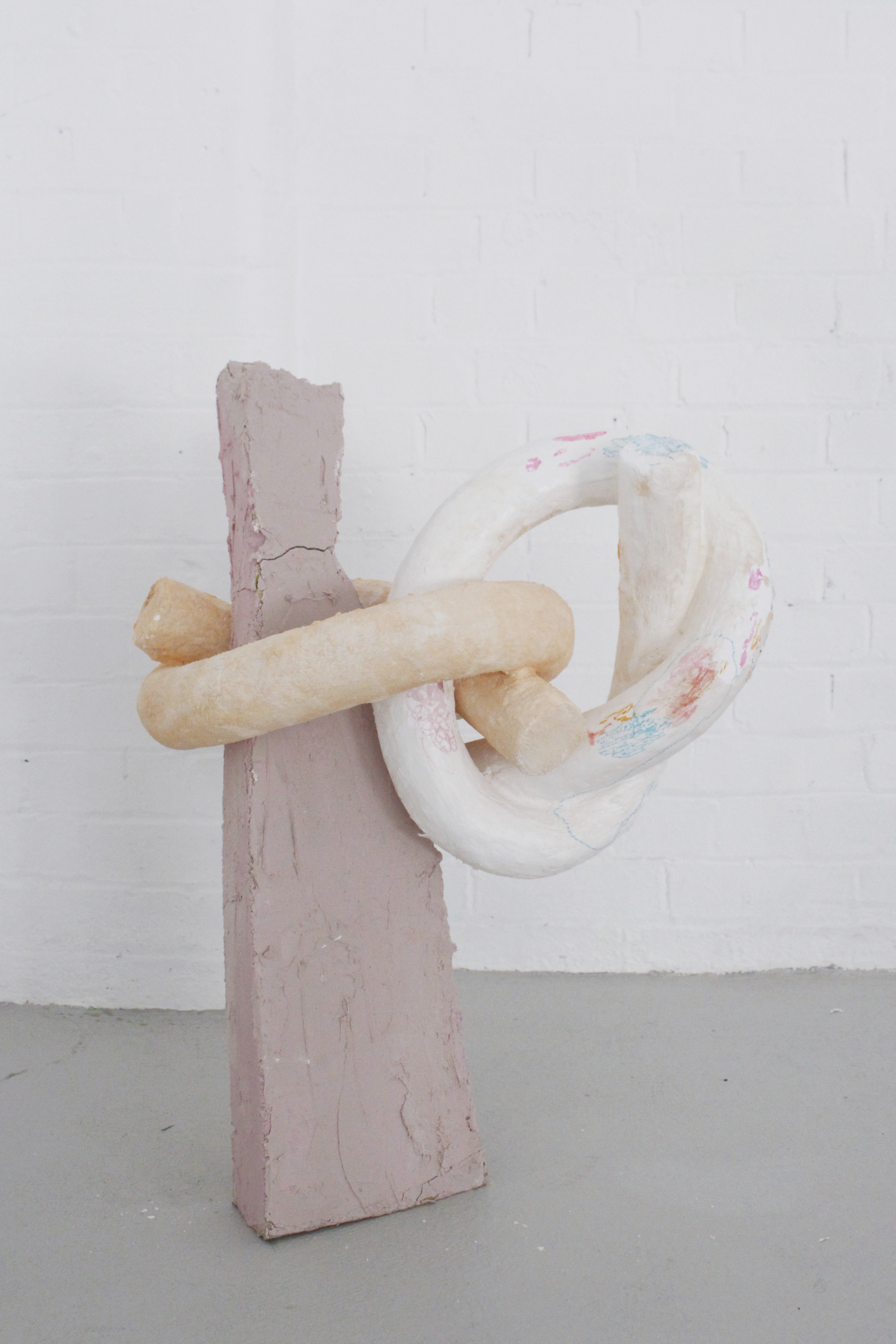Goldsmiths Fine Art graduate Sebastian Sochan holds an instinct for emotion and material acting pivotal to praxis. Intuition becomes a response to space and emotion. “I associate certain objects, human behaviours, personality traits and qualities to specific colours, shapes, textures, and forms. I have my own language where I strongly feel about certain materials corresponding to certain feelings, thoughts and qualities. In my thought process, I usually pick some adjectives that I think describe what I want to show and pick materials accordingly. I’m always drawn to new combinations and experimenting with materials.”
Work takes its driving force from thoughts that Sebastian has during the time of creation. Interactions with people lend themselves as inspiration. He expresses that such interactions could include but are not limited to falling in love, losing a friend or letting go of a person you care about. “I use drawing as a way to deal with these thoughts so often I listen to songs that relate to my feelings and translate my thoughts into shapes, colours, textures and forms. From there, I pick out some key qualities of those relationships and draw a link to what they remind me of in the world.”
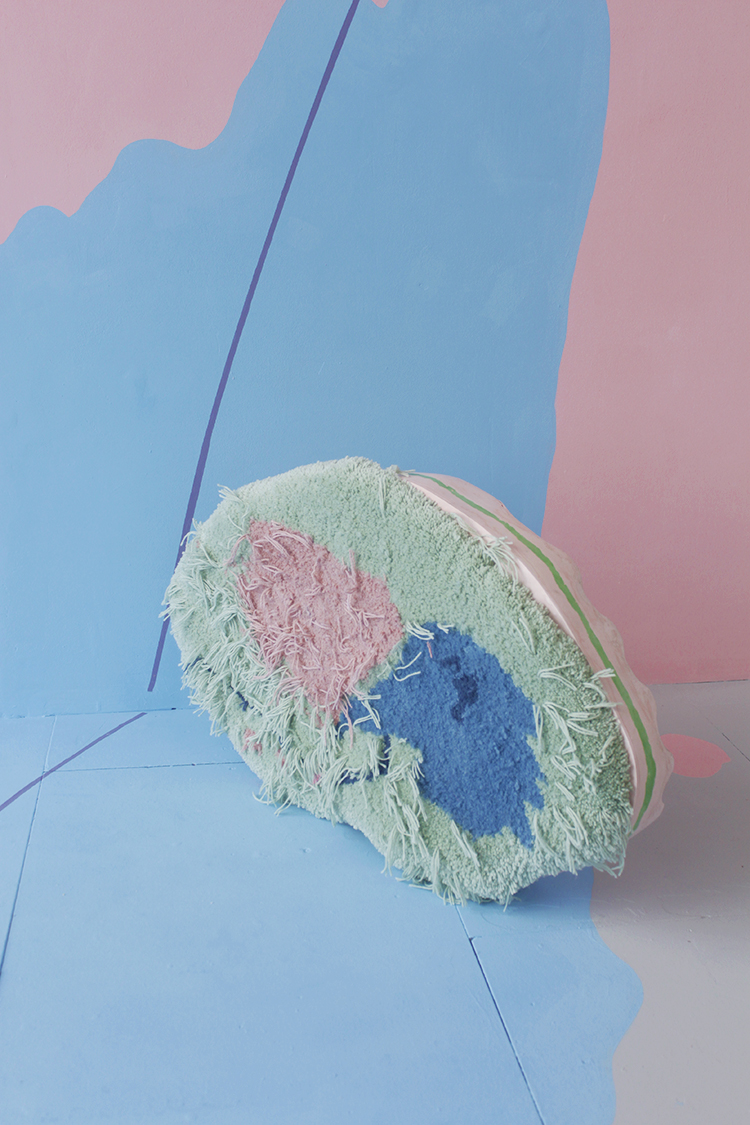
Works cannot be clearly boxed within a set category as they could be read as sculptures, drawings, objects, textiles, paintings, installations or explorations of space resulting in vulnerability. This vulnerability is physical in the way that artworks are made and displayed; oftentimes temporal pieces the works are easily dismantled or demolished. But, there is also a symbolic or spiritual vulnerability attached to his practice. “Vulnerability usually refers to the state of being exposed to the world, to the possibility of being affected negatively either physically or emotionally and I think by placing myself and my emotions in the middle of my work I’m exposing a part of myself and being vulnerable to the world.”
At the core of Sebastian’s work lay the “poetics of humbleness and fragility”. What is unknown is longed for and romanticised in works that take an “unmonumental” display. The fragility of the work exists in the relationship between the viewer and the work as the mark of human intervention is left clearly visible on the surface resulting in intimacy. “It is at the centre of every work that deals with gesture and sensibility of actions. It affects the way the work is conceived; what kind of material properties are available for the artist to use, what forms can be created, how the work will function within a space. Fragility is a quality that comes with a set of feelings and thoughts that are not always the most enthusiastic and cheerful. Fragility often asks for your sympathy and these [recent] sculptures use this as an advantage to be understood by the viewer.”
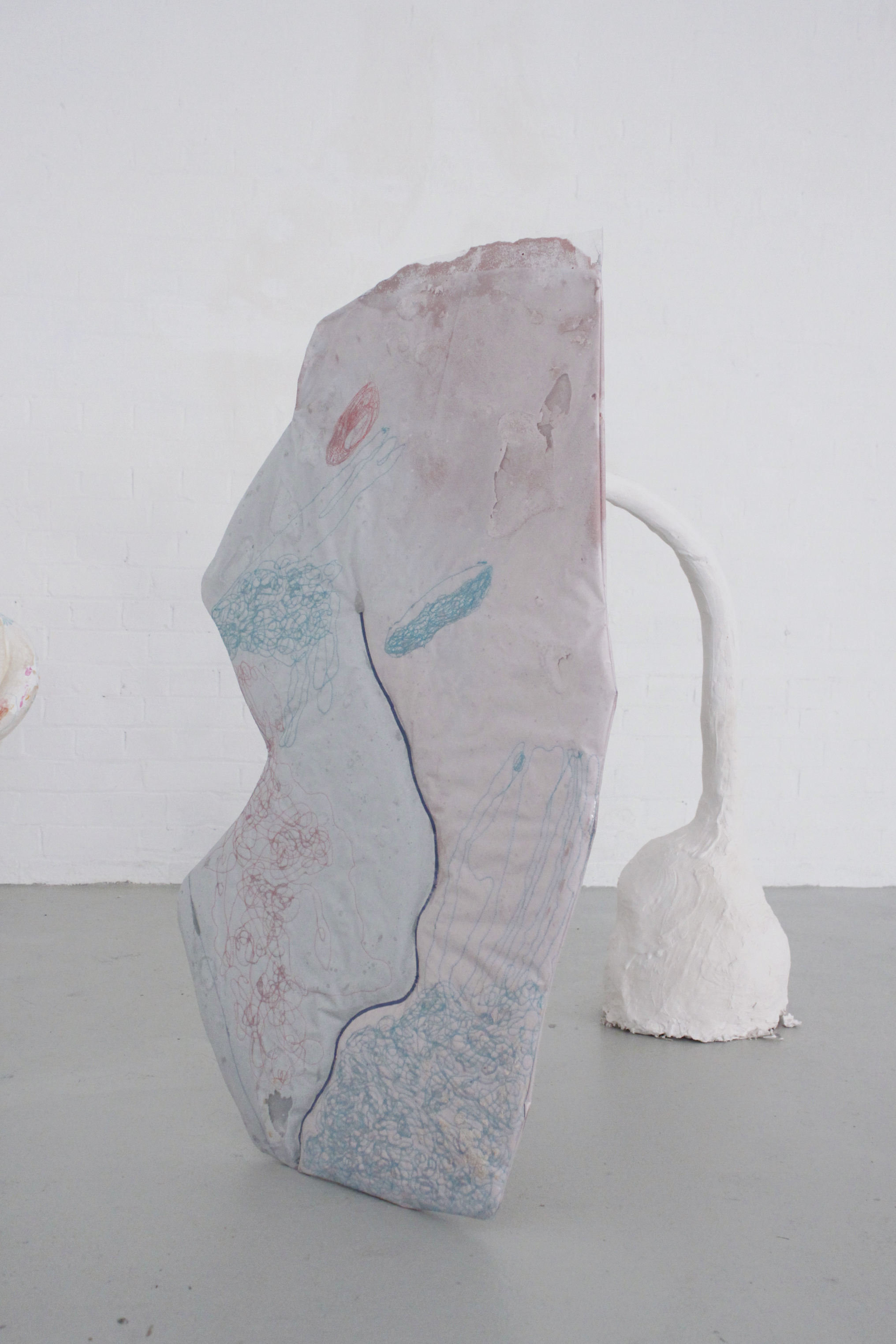
Fragility in works are conveyed in order to make his viewer more aware of their bodies within a given space, “the work and also the ‘body’ of the work itself: the materials used, processes, aesthetics, forms and decision-making.” Materials are given the power to act at will.
“In the history of sculpture, monumental sculpture was all about making work that can withstand the test of time, weather conditions, it was big, bulky, heavy, demanded the room and very confident. It was physically more present than the human body and it’s cold – any trace of physical touch was removed. They were made to ‘define’ or represent something greater than whereas my work focuses on the importance of representing my own ‘now’. My work can end up small, thin, understated, broken, doesn’t stand up for very long, relying on balance to function, made from ordinary and everyday materials. The trace of the hand absolutely remains in my work and it’s important for me to make every work by myself and to be able to handle things with my own body without having someone else manufacture it.”
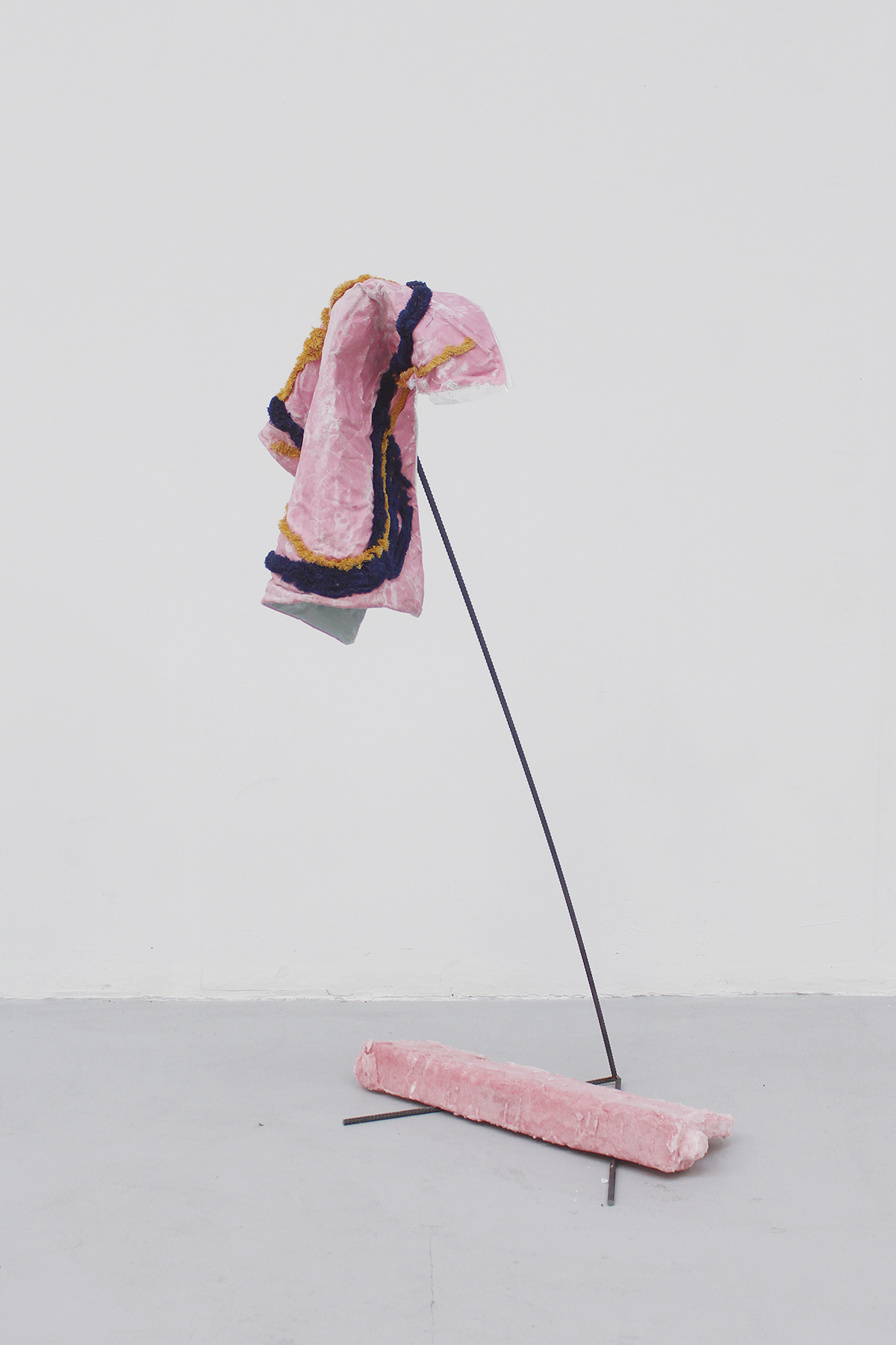
In his practice Sebastian gathers resources to work from (both physical, experiential and inspirational) from familiarity and intuitive nature with work taking reference from set design, interiors, fashion and daily life. The notion of taste through these fields acts as central and he asks, “Can something nice and potentially sweet become bittersweet through imagination, association and material exploration?”
Exhaustive usage of sugar, colour, form and textile techniques is implemented as a way to question the relationship we hold to the notion of aesthetics and objects themselves. “In the process of making, I let each stage be a suggestion, allowing the materials to have some power and create a symbiotic relationship with emotions. The work has the ability to be gestural and accidental, uncertain and confronting, longing for something desirable and imaginary.”
Recent exhibitions include Fittings, Chaos Magic Nottingham (March 2019), Matter(ing), Platform Southwark (February 2019), Labour Exchange, Creekside Studios, London (October 2018), The Woon Foundation Prize for Painting and Sculpture”, BALTIC, Gatehead (July 2018). Sochan was awarded 3rd prize at the Woon Foundation Painting and Sculpture Prize 2018 and received the Gary Hume Scholarship at Goldsmiths University (2016-2018).
